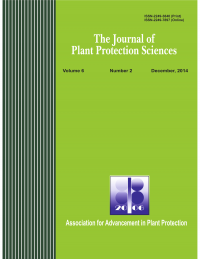Mustard aphid which is influenced by predisposing abiotic factors, has been widely reported as the most noxious insect pest limiting production of rape and mustard. Field experiment was carried out with 3 varieties of rape and mustard, 6 dates of sowing and 2 moisture regimes to understand aphid population dynamics during different phases of growth of rainfed vis-à-vis irrigated rape and mustard crops, and work out relationships between aphid population and weather parameters for its forewarning. Results revealed that initial incidence times of aphid varied from 19 November to 3 December, depending upon dates of sowing done during 1 October to 5 November, which fall under recommended dates of sowing. In crops sown during 22 October to 5 November, critical periods of aphid infestation (having greater than 30 aphids plant-1) prevailed between 19 December and 21 January. Number of aphids plant-1 was consistently greater in crops grown under irrigated condition than those under rainfed condition. Aphid population was highest during siliqua formation phase due to prevalent conducive weather conditions, followed by reproductive and vegetative phases over all varieties. Weather conditions associated with critical period of infestation remained in the range of 21.7-28.9 oC, 7.3-17.8 oC, 14.5-23.3 oC, 78-98 %, 29-73 % and 53-85 % for Tmax, Tmin, Tmean, morning RH, after noon RH and RHmean, respectively. Tmax, Tmin, Tmean and degree-days showed consistently significant negative correlation, whereas Trange, which is the difference between Tmax and Tmin, registered always positive correlation with aphid population. On aphid observation date, morning RH showed significant positive correlation, whereas after noon RH registered significant negative association with aphid population. After noon RH prevailing 3 to 5 days prior to aphid counting dates exhibited positive correlation, thus exerting favourable influence to increase aphid population. Weather based regression models, which had coefficients of determination (R2) being significant at 1 % level of significance, were able to account for 59 to 69 % of total variation in aphid population. It is concluded that weather thresholds as identified and regression models developed, along with medium range weather forecasts of 5 days available from India Meteorological Department (IMD), could be useful to forewarn aphid 2 days in advance for farmers. To escape critical aphid incidence, rape and mustard crops need to be sown by 15 October, because crops sown beyond this period are likely to be adversely affected by aphid. Keywords : Aphid, sowing date, moisture regime, weather parameters, correlation, regression






